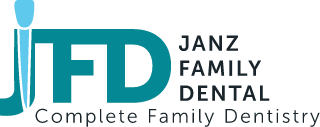3 Reasons Why You Should Floss
Want to stop your gums from bleeding? Start flossing!
Many people don’t floss their teeth because they say they don’t have the time or that it makes their gums bleed. In fact, it doesn’t take long to floss, and it makes for all around healthier gums. According to the Canadian Dental Association, you miss cleaning more than one-third of your tooth surface by not flossing. Are you one of the 25 percent of Canadians who don’t floss their teeth? Then maybe you should invest in some of the money-saving string. Flossing helps prevent gum disease. Gum disease occurs when bacteria accumulates in between the teeth and underneath the gums. Flossing once a day, preferably at night, can help prevent this.
1. Flossing will Stop Your Gums from Bleeding A common complaint people have about flossing is that it makes their gums bleed. But not flossing could make the situation far worse. Inflammation from bacteria causes the bleeding, but if you keep at your flossing for two weeks, the bleeding is likely to stop. Hold the floss in a C-shape and slide it back and forth in between your teeth. Be sure to hug the floss against each tooth to minimize trauma to your gums should the floss snap. If you floss straight up and down, you risk cutting your gums.
2. Flossing Helps Minimize Bad Breath A lot of the bacteria that causes gum disease create an odour if they start to colonize in between your teeth and underneath your gums. If you minimize or eliminate the signs of gum disease, chances are your breath will smell better. Instead of stocking up on breath mints, up your flossing.
3. Flossing Regularly will Prevent Tooth Loss When you don’t clear out the bacteria in between your teeth and underneath your gums, your immune system releases enzymes to destroy the bacteria. These enzymes end up harming the bone surrounding the area, which explains why you may end up losing your teeth when you’re older. The bone levels in between the teeth become less and less until the tooth has no more bone to support it, so it falls out. This is why you sometimes see older people with teeth that appear longer or skinnier. Flossing should be a part of everyone’s daily dental hygiene routine.

